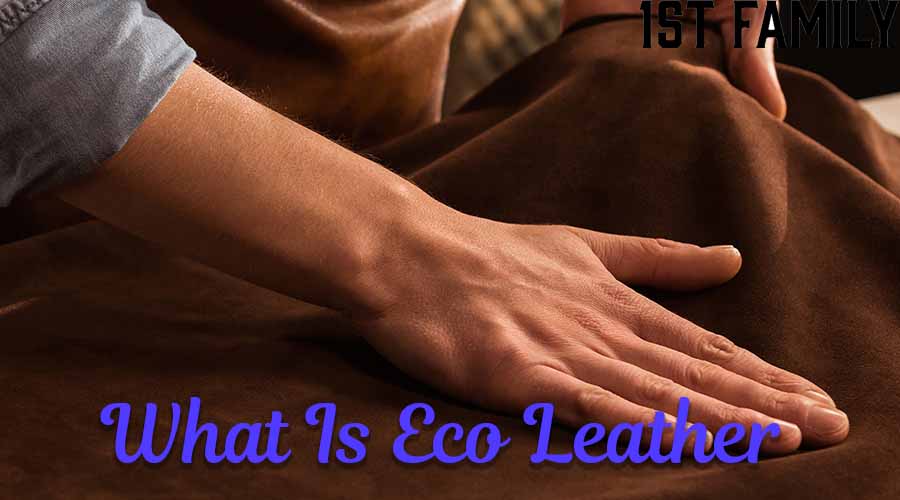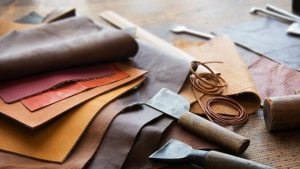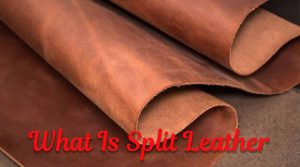
What Is Eco Leather
What is Eco Leather?
Introduction
As the world becomes more conscious of the impact human activities have on the environment, many are seeking alternatives to traditional materials that are more environmentally friendly. One such alternative is eco leather, a material that has been gaining popularity in recent years due to its numerous benefits and growing demand. But what exactly is eco leather, and how does it compare to traditional leather? This blog post will explore the definition of eco leather, its benefits, and applications, and provide an overview of what makes it a more sustainable alternative to traditional leather.

Definition of Eco Leather
Eco leather, also known as synthetic leather, is a type of material that is designed to look and feel like traditional leather, but is made from different, more sustainable materials. Unlike traditional leather, which is made from animal hides, eco leather is typically made from a variety of synthetic materials, such as polyurethane or recycled plastic, that have a smaller environmental impact.
Purpose of the blog post
The purpose of this blog post is to educate readers about eco leather and the benefits it offers compared to traditional leather. This post will explore the definition, production, and applications of eco leather and provide information on why it is a more sustainable and environmentally-friendly alternative to traditional leather.
Importance of eco-friendly materials
With the world facing a number of environmental challenges, including climate change, pollution, and loss of biodiversity, it is more important than ever to seek out and use materials that are sustainable and environmentally friendly. Eco leather offers a more sustainable alternative to traditional leather, helping to reduce the impact of human activities on the environment and preserving the world for future generations.
What is Eco Leather?
Description of traditional leather
Traditional leather is a material made from animal hides, typically from cattle, sheep, pigs, and other livestock. The hides are treated with a variety of chemicals, including tanning agents, to preserve the leather and prevent decay. The resulting material is durable, strong, and resistant to moisture and rot, making it a popular choice for a wide range of applications, including clothing, furniture, and accessories.
Differences between traditional and eco leather
While eco leather may look and feel similar to traditional leather, there are a number of key differences between the two materials. For one, eco leather is made from synthetic materials, such as polyurethane or recycled plastic, rather than animal hides. This means that eco leather is not subject to the same environmental impacts as traditional leather, such as deforestation, pollution from tanning chemicals, and the mistreatment of animals. Additionally, eco leather is often more durable and resistant to moisture, making it a more sustainable choice for a wide range of applications.
Materials used to make eco leather
Eco leather is typically made from a variety of synthetic materials, including polyurethane (PU) and recycled plastic. PU is a type of polymer that is often used in the production of eco leather because of its durability and resistance to moisture. Recycled plastic, on the other hand, is a more environmentally-friendly option as it reduces the amount of waste that would otherwise end up in landfills. Other materials that may be used in the production of eco leather include cork and other sustainable materials. Cork, for example, is a popular choice for eco leather because it is sustainable, durable, and has a unique texture that sets it apart from traditional leather. The use of cork also helps to support the cork industry, which provides a livelihood for communities in countries such as Portugal and Spain.

Advantages of Eco Leather
Environmental benefits
One of the key benefits of eco leather is its smaller environmental impact compared to traditional leather. As mentioned, traditional leather is made from animal hides and is subject to environmental impacts such as deforestation, pollution from tanning chemicals, and mistreatment of animals. Eco leather, on the other hand, is made from synthetic materials that are not subject to these environmental impacts. Additionally, the production process for eco leather is often more environmentally friendly, reducing the carbon footprint of the material and helping to conserve the world’s natural resources.
Ethical production practices
Another advantage of eco leather is that it is often produced using more ethical and humane practices. As traditional leather is made from animal hides, there are often concerns about the treatment of animals in the leather production process. Eco leather, on the other hand, does not involve the use of animal hides, so there are no concerns about the mistreatment of animals in the production process.
Durability and performance
Eco leather is also known for its durability and performance. It is often more resistant to moisture, stains, and other forms of wear and tear compared to traditional leather. This means that eco leather products are often more long-lasting and require less maintenance, making them a more sustainable choice in the long run. Additionally, eco leather is often more flexible and lightweight than traditional leather, making it more versatile and suitable for a wide range of applications.
Applications of Eco Leather
Fashion and clothing
Eco leather is increasingly being used in the fashion industry, where it is used to make a wide range of clothing items, including jackets, shoes, and accessories. Its versatility and durability make it an ideal choice for clothing, as it is both comfortable and long-lasting. Additionally, its sustainability and environmentally-friendly nature make it a popular choice among consumers who are looking for more sustainable fashion options.
Furniture and interiors
Eco leather is also commonly used in furniture and interiors, where it is used for upholstery, cushions, and other items. Its durability and resistance to moisture make it an ideal choice for furniture, as it is both long-lasting and easy to clean. Additionally, its environmentally-friendly nature makes it a popular choice among consumers who are looking for more sustainable furnishings options.
Automotive and transportation
Eco leather is also becoming more common in the automotive and transportation industries, where it is used to make car interiors and other related items. Its durability and resistance to moisture make it an ideal choice for car interiors, as it is both long-lasting and easy to clean. Additionally, its environmentally-friendly nature makes it a popular choice among consumers who are looking for more sustainable transportation options.
Criticisms of Eco Leather
Lack of standardization
One criticism of eco leather is that there is currently a lack of standardization in the industry, making it difficult to determine which materials are truly eco-friendly. This can lead to confusion among consumers, who may believe they are purchasing a sustainable product when in reality it is not. It is important for consumers to research the materials used in the production of eco leather products and to look for certification from reputable organizations, such as the Global Organic Textile Standard (GOTS) or the Forest Stewardship Council (FSC), which ensure that the product meets certain environmental and social standards.
Lower quality compared to traditional leather
Another criticism of eco leather is that it is often lower quality compared to traditional leather. This is because synthetic materials are often less durable and may not have the same natural look and feel as traditional leather. However, this is changing as advances are made in the production of eco leather, and many products are now made from high-quality synthetic materials that are indistinguishable from traditional leather.
Limited supply chain transparency
Finally, another criticism of eco leather is that there is limited supply chain transparency in the industry. This makes it difficult for consumers to know where their products are coming from and to ensure that they are being produced using environmentally and socially responsible practices. To address this, consumers can look for eco leather products that are certified by reputable organizations, such as the Global Organic Textile Standard (GOTS) or the Forest Stewardship Council (FSC), which require supply chain transparency and ensure that the product meets certain environmental and social standards.
Conclusion
In conclusion, eco leather is a sustainable alternative to traditional leather that offers a number of advantages, including a smaller environmental impact, ethical production practices, and durability and performance. It is increasingly being used in a range of industries, including fashion, furniture and interiors, and automotive and transportation. However, there are still some criticisms of eco leather, such as a lack of standardization, lower quality compared to traditional leather, and limited supply chain transparency. Despite these challenges, eco leather is an important step forward in the development of more sustainable materials and is a promising option for consumers who are looking for more environmentally and socially responsible products.








